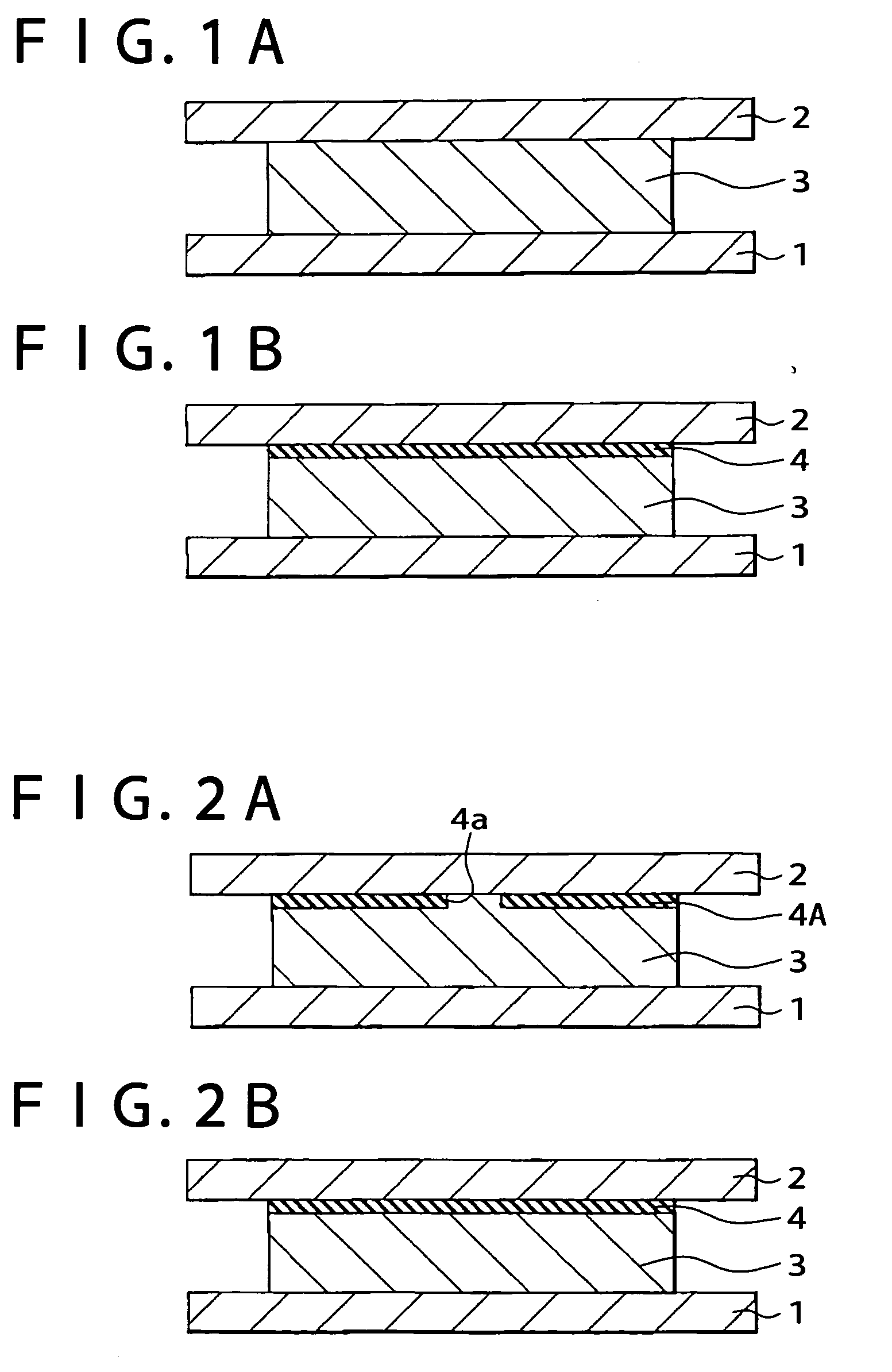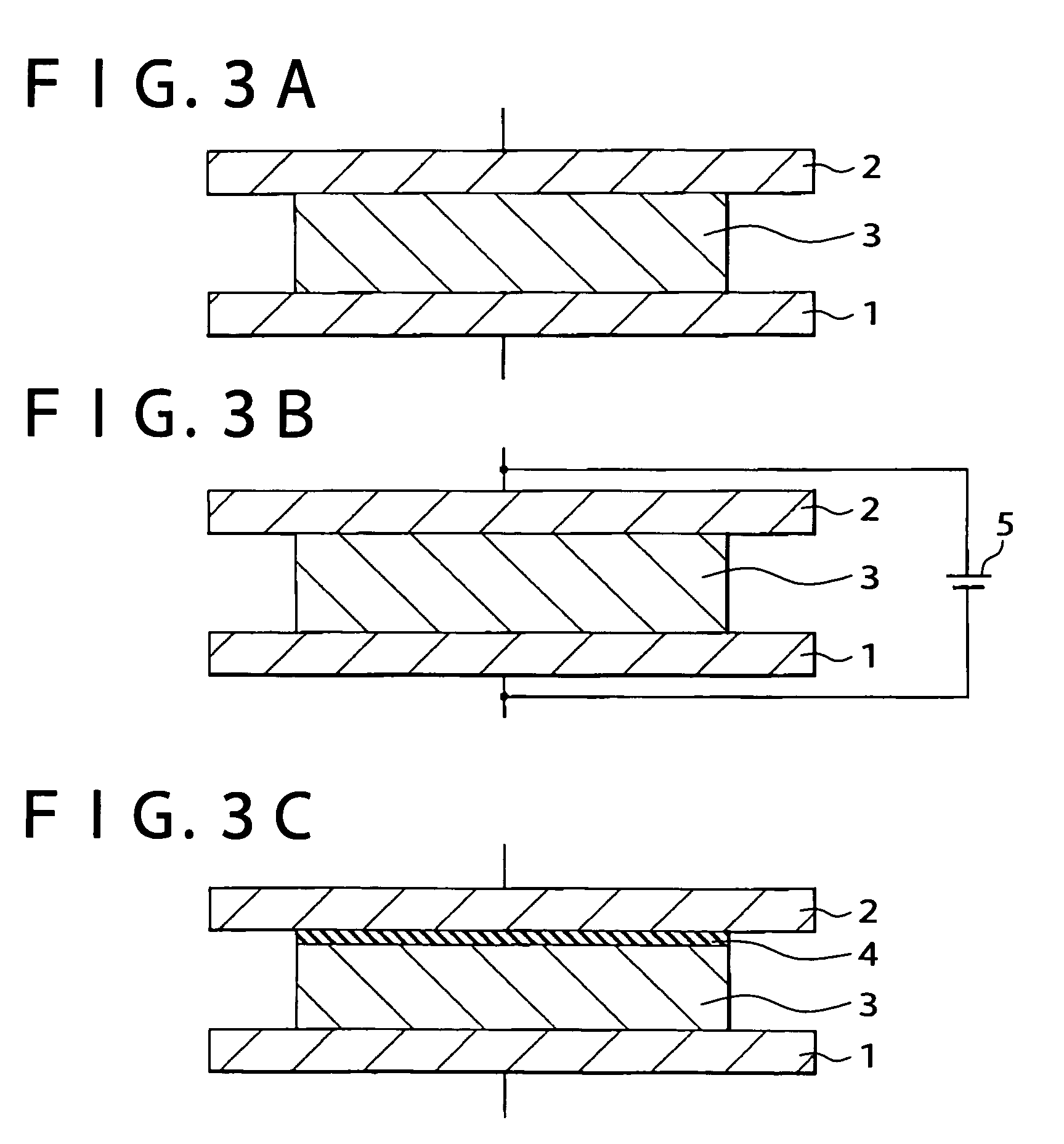Storage device
a storage device and storage technology, applied in the field of storage devices, can solve the problems of increasing power consumption, failure to hold written data in a stable manner, etc., and achieve the effects of reducing power consumption, increasing or reducing the area of storage, and holding stably
- Summary
- Abstract
- Description
- Claims
- Application Information
AI Technical Summary
Benefits of technology
Problems solved by technology
Method used
Image
Examples
first embodiment
[0029] FIGS. 1(A) and 1(B) show a main configuration of a storage device according to a first embodiment of the present invention. Although it is not shown in the figure, the storage device includes a plurality of storage elements that may be, for example, arranged in a matrix form. The storage element has a structure having an inter-electrode material layer 3 sandwiched between a pair of electrodes 1 and 2 (a first and a second electrodes) facing each other, and is provided with a voltage application unit (not shown) for applying a predetermined voltage to the electrodes 1 and 2. Each of the plurality of storage elements has, in a corresponding arrangement, an active element or a transistor (not shown in the figure) for controlling electrical access to each element, thereby completing the configuration of the memory cell. Each storage element contains an oxidation-reduction active material A extended in a range over which an electric field produced at the time of an application of ...
second embodiment
[0043]FIG. 2(A) shows a second embodiment of the present invention, in which the element with the structure shown in FIG. 1(A) has the electrode reaction inhibition layer 4A with an opening 4a in a part thereof. The electrode reaction inhibition layer 4A including the above electrode reaction inhibition material B (nickel oxide (NiO) in this case) is formed in advance on a surface of one of the electrodes, for example the second electrode 2.
[0044] The electrode reaction inhibition layer 4A may be obtained by, after a formation of the electrode reaction inhibition layer 4 (nickel oxide) over the whole surface of the electrode 2 in the element of the structure shown in FIG. 1(A) by oxidizing nickel contained in the electrode 2 by the application of a negative potential than that of the second electrode 2 to the electrode 1, applying a positive potential than that of the electrode 2 to the electrode 1. Thus, a part or most of the electrode reaction inhibition layer 4 is destroyed or d...
third embodiment
[0088] A third embodiment of the present invention is configured to form a Schottky diode between the electrode 2 and the inter-electrode material layer 3 in the structure shown in FIGS. 2(A) and 2(B), so that the inter-electrode material layer 3 is specified as a p-type semiconductor layer. The Schottky diode permits the current to flow if the application of a negative voltage larger than a threshold value of the diode characteristics to the electrode 2, and conversely, permits no flow of the current if the application of a positive voltage to the electrode 2. A specific material of the inter-electrode material layer 3 includes amorphous silicon (Si) containing a p-type impurity, for instance.
[0089] The electrode 1 is formed with a material such as gold (Au) capable of making an electrical contact with the semiconductor material described above. On the other hand, the electrode 2 is formed with the above oxidation-reduction active material A such as nickel (Ni). As described above...
PUM
 Login to View More
Login to View More Abstract
Description
Claims
Application Information
 Login to View More
Login to View More - R&D
- Intellectual Property
- Life Sciences
- Materials
- Tech Scout
- Unparalleled Data Quality
- Higher Quality Content
- 60% Fewer Hallucinations
Browse by: Latest US Patents, China's latest patents, Technical Efficacy Thesaurus, Application Domain, Technology Topic, Popular Technical Reports.
© 2025 PatSnap. All rights reserved.Legal|Privacy policy|Modern Slavery Act Transparency Statement|Sitemap|About US| Contact US: help@patsnap.com



